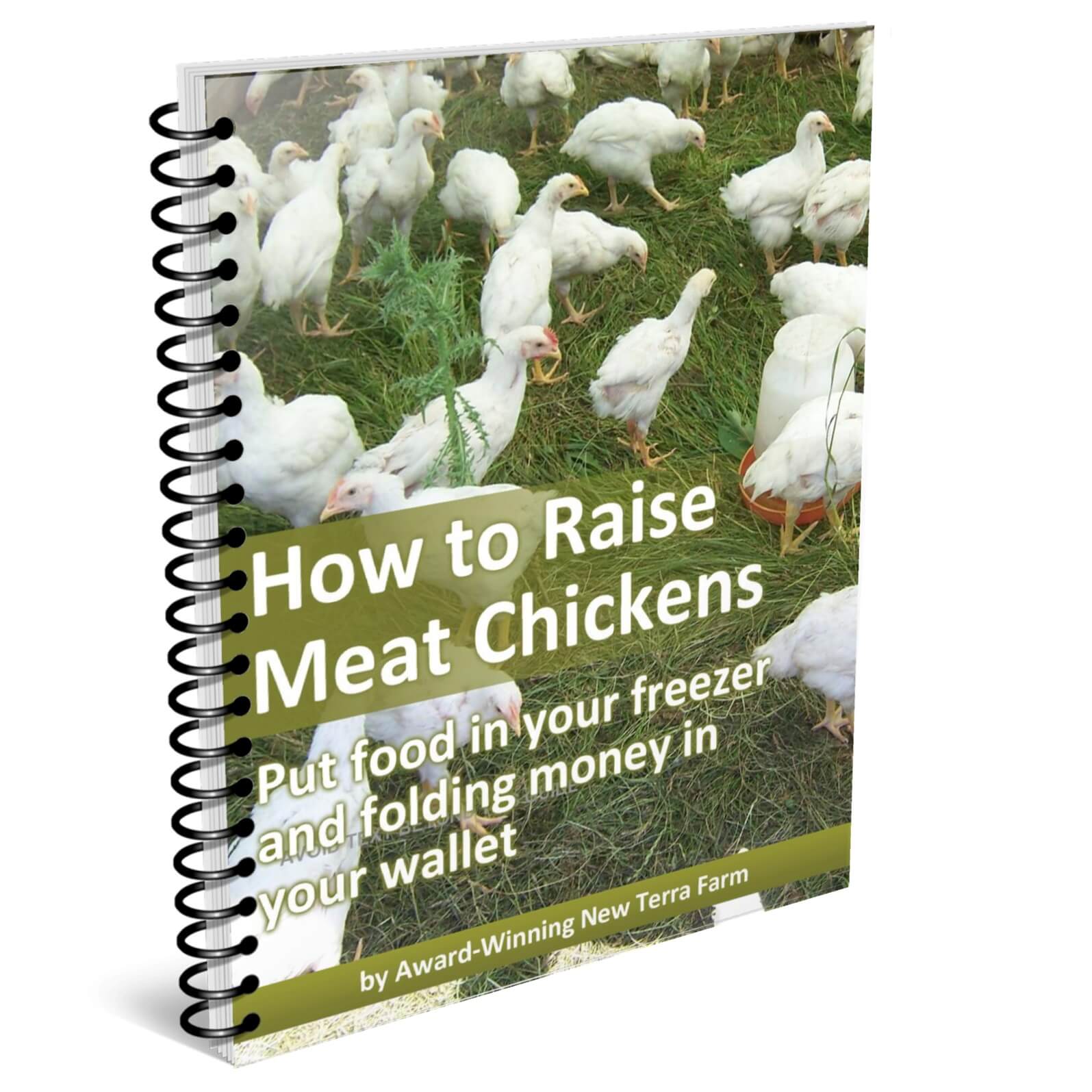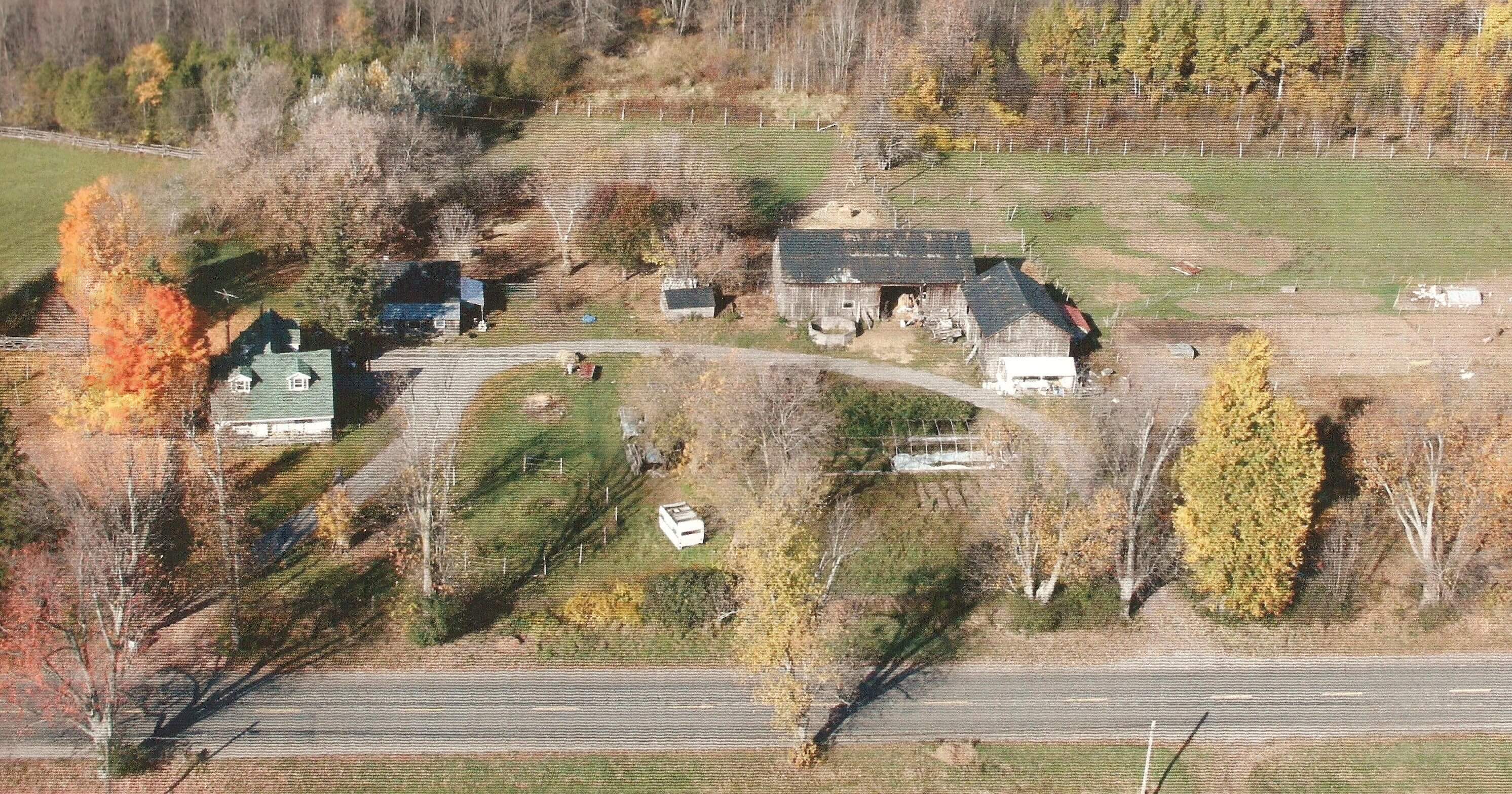Building a chicken tractor for raising meat birds
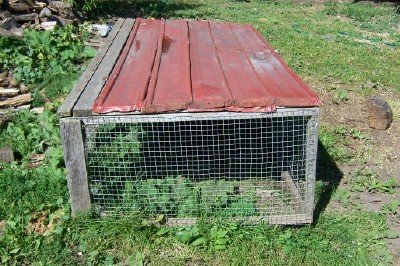 Our first chicken tractor
Our first chicken tractorWe have been raising meat birds on pasture for about 20 years. This page explains our experience with chicken tractors and why we eventually moved away from that model of production.
A 'chicken tractor' is basically a low, wire-enclosed, open-bottomed box for raising chickens. This structure keeps the birds in and predators out. The tractors are usually moved to fresh ground daily.
These portable cages can be constructed to just about any size suitable to your purposes. Make sure to allow adequate space for the birds so they don't poop up the enclosure too quick.
Well-known farmer Joel Salatin of Polyface Farm uses a 'fleet' of tractors sized about 10' x 12' to raise thousands of birds a year. I believe he puts about 75 birds in each tractor, giving a space of about 1 1/2 square feet per bird.
I would consider this the minimum space per bird you should consider, if the birds are confined. A small tractor might be 4' x 4', housing half a dozen birds.
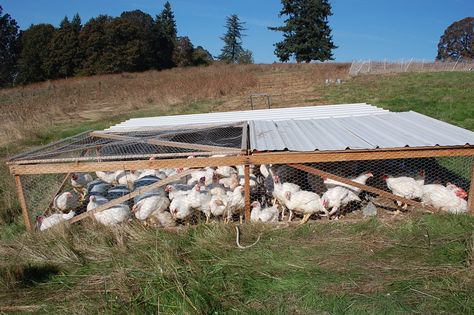 Chicken tractor at Polyface Farm
Chicken tractor at Polyface FarmThe New Terra Farm Chicken Tractor
We built a few 4' x 8' chicken tractors and put them in our garden one
year. We moved the tractors around and the birds ate weeds and bugs, and
fertilized our garden.
The tractors are usually constructed with a solid - e.g. steel - roof,
and open sides enclosed in chicken wire. Part of the top needs to open
to provide feed and water and access to the birds.
We used 2" x 3" framing for our chicken tractors; larger models may
require heavier framing. Construction of a tractor is a compromise
between making a structure solid enough to stay together, yet light
enough to move.
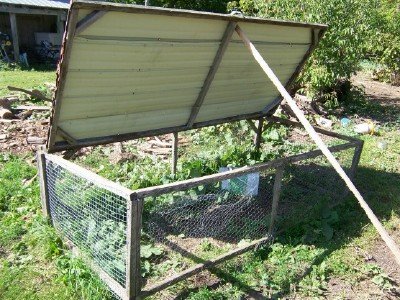 Not pretty but it worked OK
Not pretty but it worked OKThe tractor pictured above is 4' x 8'; we would put up to a dozen birds in it and move it around our garden to help clean up weeds and bugs.
The Benefits of Chicken Tractors
- Rotational grazing chickens is good for the birds and your pasture. As you move your chickens around, they leave behind droppings that act as an excellent natural fertilizer.
- Bug control. Chickens are proficient bug hunters. We moved our small tractor around to target specific areas with insect problems e.g. in our garden. Beats the chemical approach.
- Weed control: Foraging chickens help control weed growth. Grass benefits from regular trimming, but weeds will be decimated.
The Drawbacks of Chicken Tractors
- Tractors MUST be moved daily. Since the birds are confined 24/7, overgrazing can occur if the chicken tractors are not moved frequently enough.
- Manure build-up. By the same token, unless moved daily the poop will accumulate. This is not healthy for the birds or your field.
- Moving Challenges: Depending on the size and design of the tractor and the terrain, moving the tractor might not always be easy. Since the tractors are moved with the birds inside, birds can get hurt.
It was this last point that finally moved us away from chicken tractors to the day-range system we use now.
The Mini-Farm Report shows how to integrate chickens, pigs and a market garden, even on a small property. Get it below.
Chicken Tractors vs. Day-Range Poultry
We no longer use chicken tractors for our meat birds. We were not happy with the performance of chickens in them, and instead we designed and built a Movable Coop and our Hoop Coop to day-range our poultry (see pictures below.)
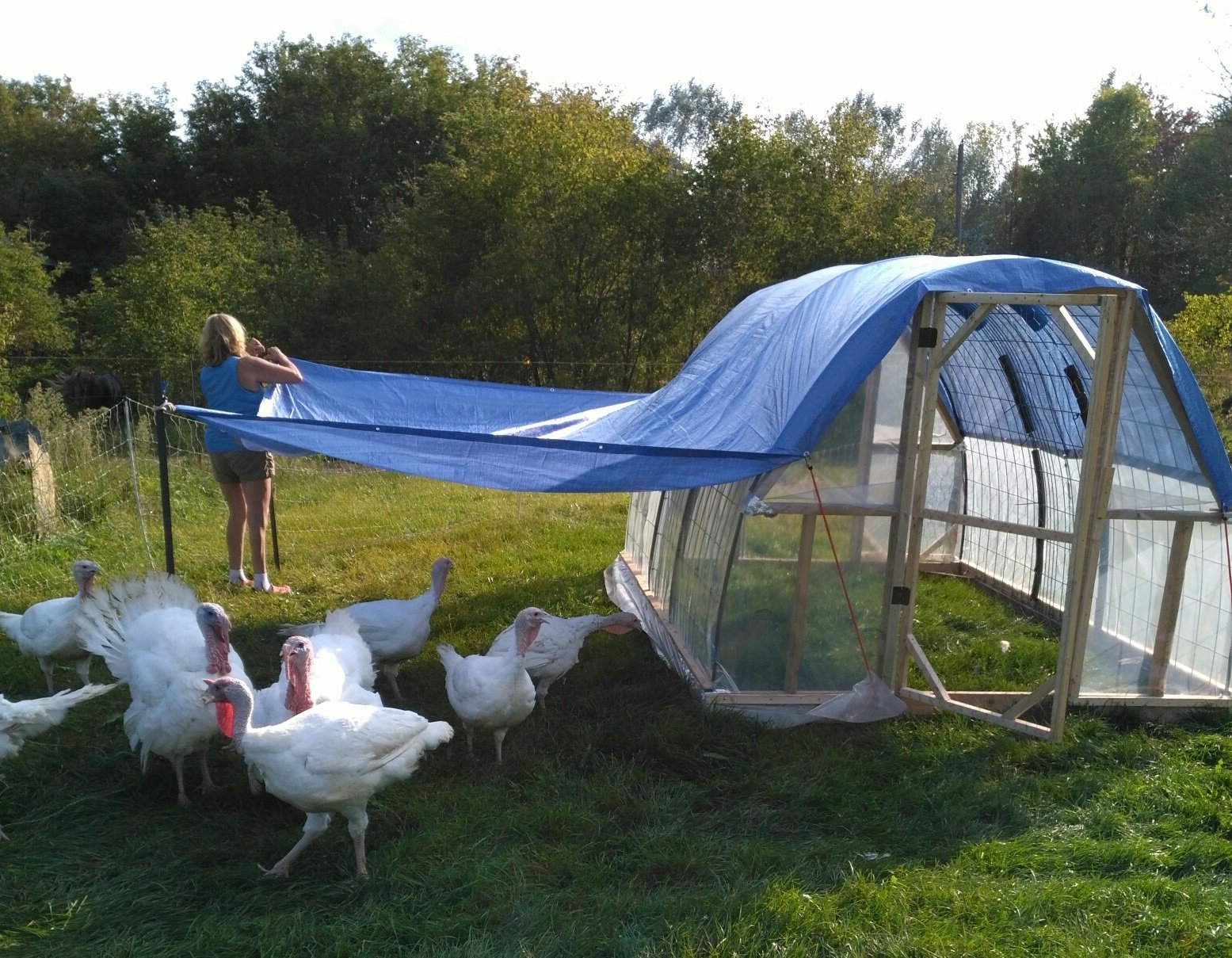 We find our chickens and turkeys do better if we 'day range' them
We find our chickens and turkeys do better if we 'day range' them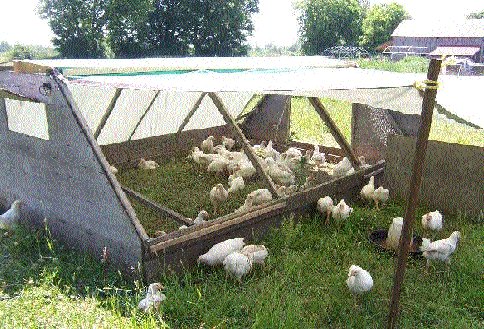 The first portable coop we built
The first portable coop we builtThe portable coops are protected by electric mesh fencing powered by a solar fence charger. We let the birds out in the daytime and bring them in at night. Easy to do because they will follow the feed.
The birds are out in the daytime, so accumulation of poop in the coop is reduced.
We move the coops every couple days and relocate the fencing once or twice for each batch of birds. Because we move the coops when the birds are out, no birds get injured.
We're happier with the results in our movable coops. The birds seem healthier and happier too, and our losses have dropped to just about zero.
If you think you might want to try day-ranging your own birds, check out the resource below.
Bootstrap Birdies! Based on our 20+ years of experience raising meat birds on pasture, here is is the latest edition of How to Raise Meat Chickens.
Along with detailed instructions on raising healthy, happy birds, you also get plans for for our two styles of movable coops (plus a few more goodies).
OR, get 'How To Raise Meat Chickens' in my Homesteader Book Bundle and save a bundle.
- Home Page ›
- Chicken Coop Construction ›
- Chicken Tractor
Recent Articles
-
Backyard Garden Profits your key to a successful small market garden
Apr 06, 25 05:38 AM
I wrote Backyard Garden Profits for the small grower who wants to launch a successful side hustle gardening for money. Practical actionable advice small-scale growers who want to earn more, waste less… -
Homesteader Book Bundle only from New Terra Farm
Apr 01, 25 04:58 PM
If you have a hankerin' for country living, my best value Homesteader Book Bundle is a great resouirce. -
New Terra Farm market gardening book shows you success step-by-step
Apr 01, 25 04:33 PM
Start-up, market and manage a successful organic market garden with my Bootstrap Market Gardening Book
